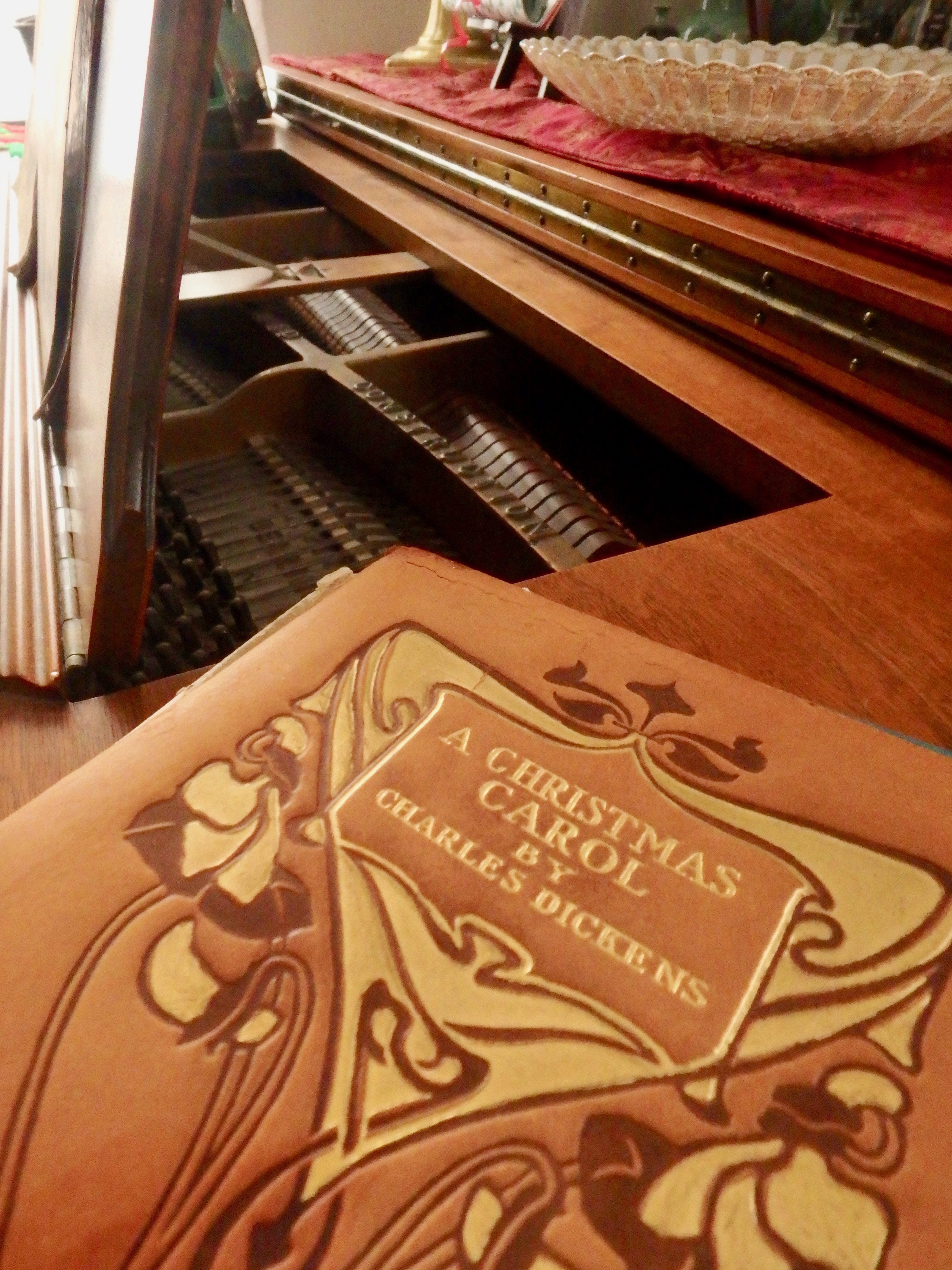DECEMBER 23, 2019 – In the lead-up to my fourth Christmas, our dad read every word of Charles Dickens’ A Christmas Carol to our entire family. During each session, which seemed like an eternity, Mother, my sisters, and I sat perfectly still while Dad read the classic tale.
Later, he bought an LP version of the work, which my sisters and I played multiple times each Christmas season. The record starred Laurence Olivier, as narrator, and though abridged, was wholly true to Dickens’s text. For three-dimensional impressions, we’d pass around the Viewmaster version while the recording played.
Over the weekend, to compensate for my close call with American consumerism (see my December 20 post), I re-read A Christmas Carol. I chose the leather-bound edition that my wife included in one of her Christmas displays atop the piano. The book is at least 109 years old. I know this from the inscription that was typed out and glued to the face page:
Proffered with kind feelings to a modern Mamie Rose.
Christmas 1910 – Reiterating the voice of that philosopher, Syrus, who gave us the concrete maxim, ‘Conversation is the image of the mind; as the man, so is his language.’ The more I peruse the writings of the author of this carol beautiful, and he who penned such appealing prose, the stronger I enlist to his standard! My viewpoint leads me to believe that HE KNEW the people; he lived closer to their hearts, and he dwelt in the midst of the English-speaking people. This is the specific reason for the love I bear this man—Charles Dickens. Sincerely /s/ [one Edna MacHenry].”
I always thought that Scrooge got a bum rap.
First, as a kid, I too counted my coins—daily. So why was Scrooge such a bad guy for doing the same? (I’ll never live down the Christmas occasion when our grandmother gave each of us a shiny new half dollar (in addition to fine presents that came in a Dayton’s box). My sisters gushed with spontaneous gratitude. I held back. When they finished, I said, “Can’t I have a dollar?” My grandmother laughed. My sisters gasped in condemnation.)
Second, Ebenezer’s bum rap is really about his enduring reputation—as a skin-flint, rather than as a redeemed sinner. The quintessential Dickensian moniker, “Scrooge” is universally synonymous with an abusive, miserly, old man. Except for the final scenes of A Christmas Carol, “Scrooge” is rarely remembered as, “a model of a formerly abusive, miserly old man who, by revelation sees the light, experiences a true change of heart and becomes the essence of Christmas cheer.”
The signature line of Dickens’s story is not “Bah! Humbug!” but the one at its close: “[A]nd it was always said of him, that he knew how to keep Christmas well, if any man alive possessed the knowledge.”
As Dickens adds in conclusion, “May that be said of us, and all of us. And so, as Tiny Tim observed, ‘God bless us, Every One!’”
(Remember to subscribe to this blog and receive notifications of new posts by email.)
© 2019 Eric Nilsson
